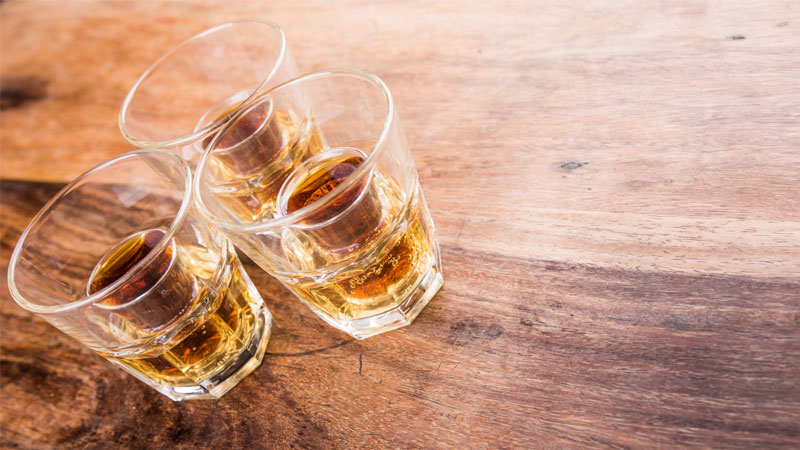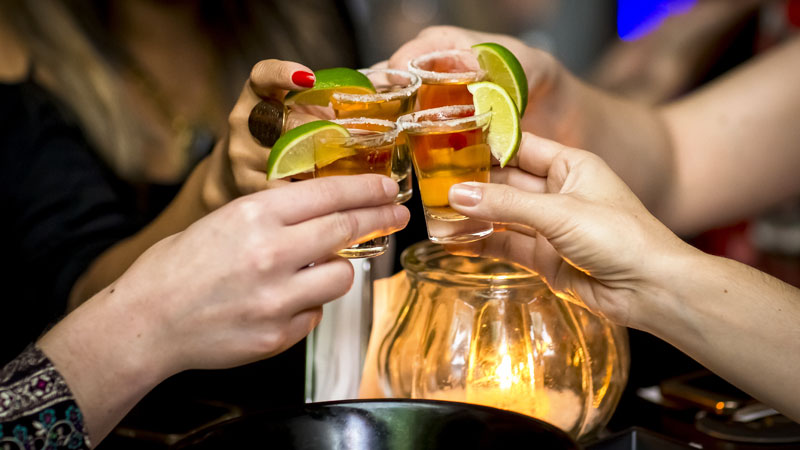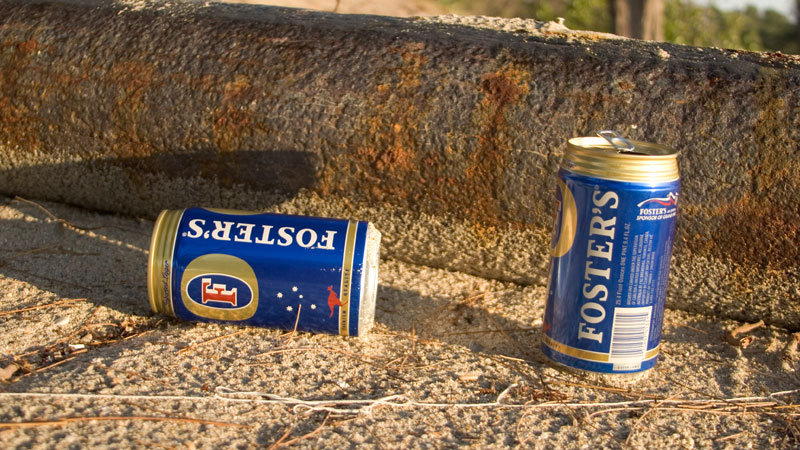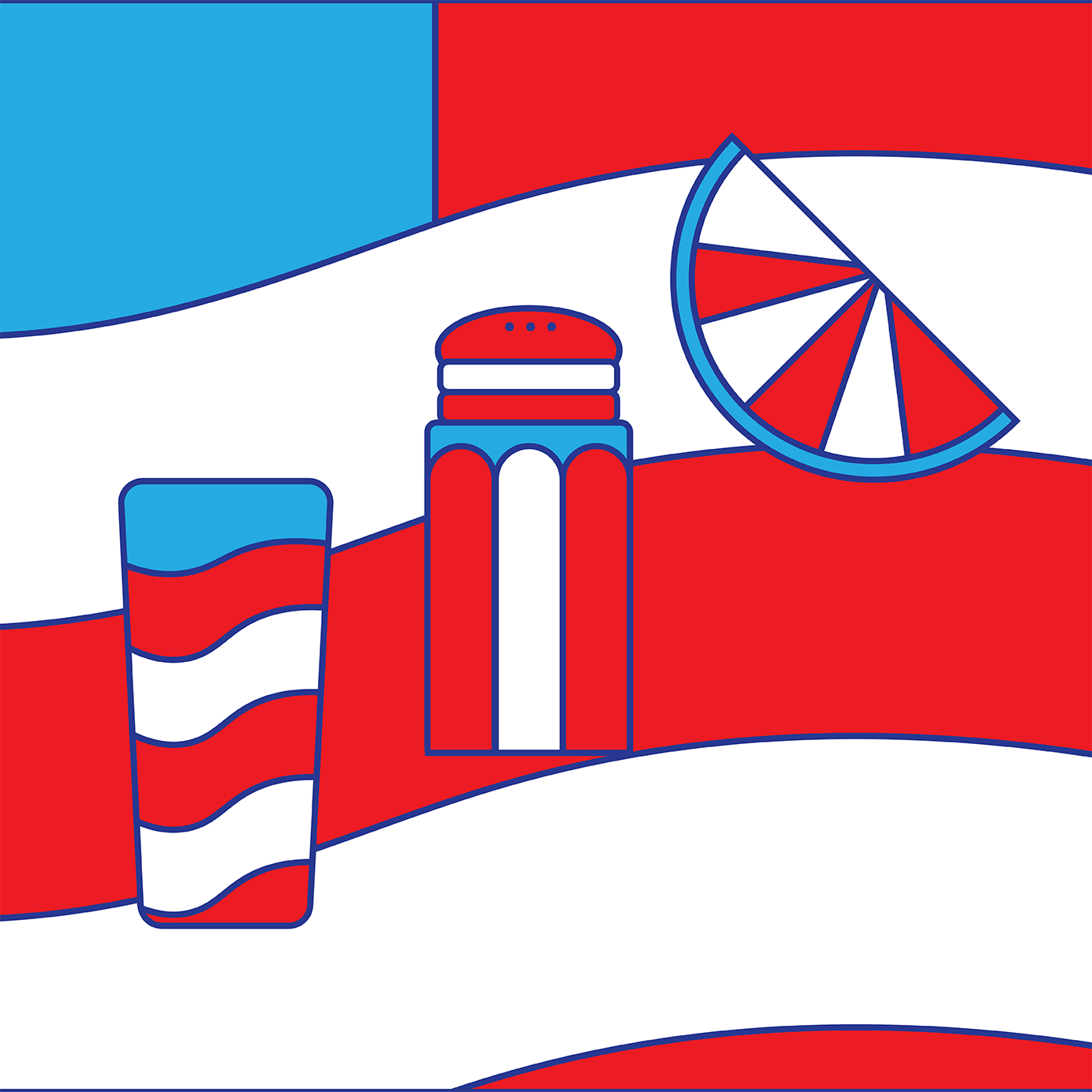If you like shooting tequila with salt and lime, by all means go for it! Just don’t blame Mexico for your hangover.
The trinity of tequila, salt, and citrus is one of many homegrown drinking customs Americans tend to think are foreign. We also assume locally brewed, cleverly marketed macro beers are shipped from far-away lands, and will drop pretty much any liquid into a shot glass in the name of internationalism.
It’s easy to see how these traditions get their starts. Americans are diverse, and our drinking traditions and folklore hail from down the block and around the world. We are not as well-traveled as other drinkers, either; according to the BBC, 42 percent of Americans hold passports, versus 76 percent of those in England or Wales.
In the spirit of self-discovery, we examined three homegrown drinking customs glazed with the sheen of far-away lands. Alternatively cherished and cringe-worthy, these traditions are entirely American-made.
Jagerbombs

In 1934, a German vinegar maker named Curt Mast created a digestif called Jagermeister. Ingredients comprise some 56 herbs and spices, and the exact composition was and remains a carefully guarded secret.
Jagerbombs, on the other hand, are an unholy alliance of Jagermeister plus an energy drink. The unlikely dance partners are combined in a shot glass and consumed quickly, often while someone is singing “Sweet Caroline” into a karaoke machine. They have become so ubiquitous in American college bars over the past 20 years that multiple manufacturers sell Jagerbomb glassware.
Historians credit Sydney Frank, an entrepreneurial American in mid-century NYC, for Jagermeister’s shift from old-fashioned digestif to party fuel.
“When [Frank] noticed the residents of Manhattan’s old German district sipping a strange drink, he somehow saw its potential as a party shot for young people,” writes Simon Usborne in The Independent.
Frank began taking bottles to bars in New York and New Orleans in the 1970s, “dispatching scantily-clad ambassadors he called Jägerettes… When a Louisiana newspaper likened it to Valium, sales soared higher still,” Usborne writes.
Last spring parent company Mast-Jagermeister SE launched an advertising campaign set in Bauhaus-era Berlin, in hopes of highlighting Jagermeister’s European roots. “The move is an attempt to shift the focus back from frat-boy Jager-bombs to the liquor’s German heritage,” according to Adweek.
Tequila Shots

Tequila is Mexican. Shooting it with salt and a lime is not.
In lieu of limes and salt, in certain regions of Mexico, tequila can be accompanied by a pony glass of sangrita. Sangrita is a traditional, non-alcoholic tequila chaser made with juiced oranges, tomatoes, and limes, plus a dash of Tabasco or chillies for heat.
“Most Mexicans would recoil in horror to watch a fine extra Anejo necked down with a lick of salt, preferring instead to sip it neat,” according to an article in The Drinks Business, “How to Drink Tequila Like a Mexican.”
The preferred manner for sipping quality tequila is from a tall, thin glass called a caballito, or “little horse.” Riedel currently offers a pair of caballitos for $59.
While one might see hard-partying Mexican students taking shots of inexpensively made tequila blanca, those are the exceptions, not the norm. Assuming theirs is the practice of an entire country would be like watching American coeds shotgunning beers on YouTube and assuming that’s how every single American beer is meant to be consumed.
“Tequila is best treated and thought of like wine, because wine expresses terroir,” tequila guide Clayton Szcech tells the Los Angeles Times. “If you don’t want to taste it, why are you drinking it?”
Jessie Wohlers, general manager of Brooklyn, N.Y. agave destination Leyenda, agrees. Salt and lime are just there to mask the flavor of imperfect spirits, she says.
“If you go to a place and they’re offering up limes with their shots of tequila, my guess is it’s not 100 percent tequila; it’s a blend of agave and other additives, like sugars and fructose,” she told VinePair earlier this year. She suggests the practice stems from an era when subpar spirits were the norm, especially in the United States.
Foster’s. Australian for Beer?

Thirty years of marketing campaigns have successfully convinced drinkers worldwide that Foster’s, a macro lager owned by SABMiller/MillerCoors, is the ultimate Australian beer.
“The reality is that if you walked into a bar in Australia and ordered a Foster’s, you might receive some quizzical looks,” Kris Griffiths writes in BBC. “It’s a long way down the popularity list and almost unheard of in some parts of the country.”
XXXX and Victoria Bitter, or VB, are Australia’s top beer companies. Foster’s is its largest international brand — in fact, in Great Britain, it is the second most popular lager.
The long con began in the 1980s, when Crocodile Dundee’s own Paul Hogan appeared in advertisements. A 21st-century campaign, “How to Speak Australian” was so impactful it led one New Yorker to file a class action lawsuit against MillerCoors. He alleged the company had intentionally misled him to think the lager was international. (He apparently lost.)
In reality, the beer has been brewed in Albany, Ga. and Fort Worth, Tex. since 2011.
“The brand’s slogan may be “Australian for Beer,” but Aussies know it better as “Some SABMiller-owned marketing garbage that’s mostly brewed overseas these days,” writes Will Gordon in a Deadspin hit piece, “Foster’s: Australian for Fraud.”
